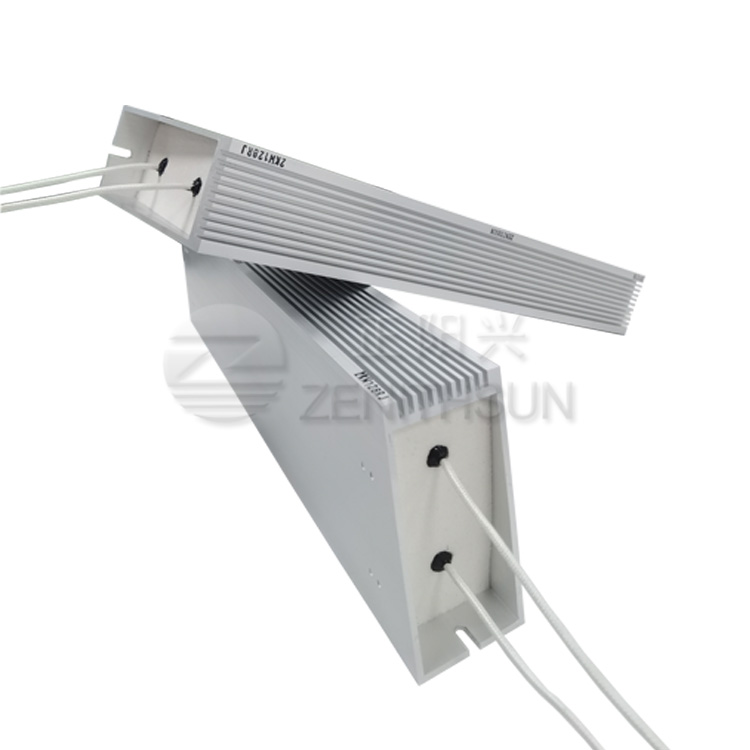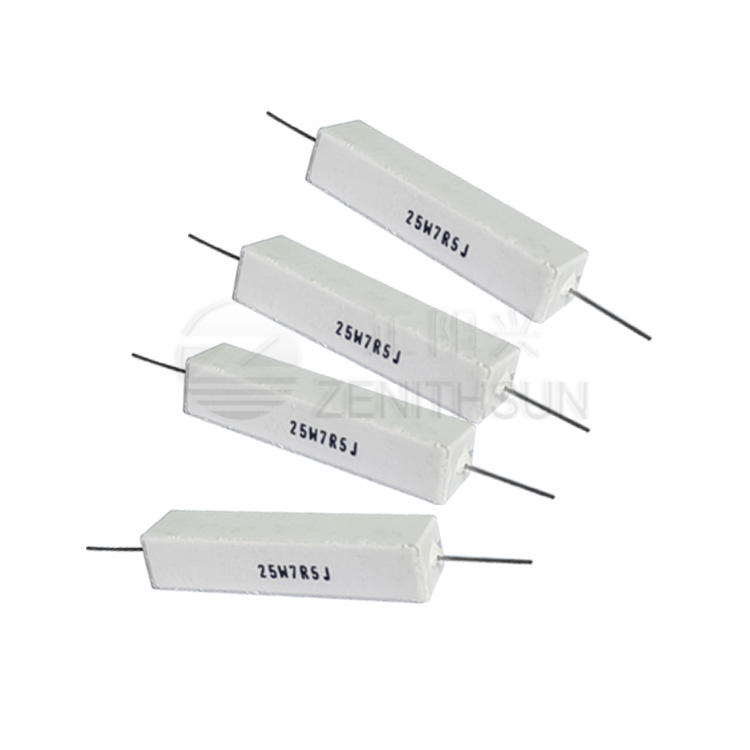Aluminum Resistors and Cement Resistors belong to the same category of wirewound resistors, but there is no difference between Aluminum Resistors and Cement Resistors as far as resistance value is concerned. Cement resistors are wirewound resistors sealed with cement, i.e., the resistor wire is wound on non-alkaline heat-resistant ceramic parts, the outside of which is added with heat-, moisture-, and corrosion-resistant materials for protection and fixation, and the wirewound resistor body is placed into a square ceramic frame, which is filled and sealed with a special non-combustible heat-resistant cement. The outer side of cement resistor is mainly made of ceramic. There are two types of cement braking resistors: ordinary cement resistors and talc porcelain cement resistors.
From the power point of view, the power of the aluminum housed resistor can be made larger, but the cement resistor can only be made up to 100W. The aluminum housed resistor belongs to the higher power resistor, which is able to allow the passage of larger currents. Its role is the same as the general resistor, except that it can be used in occasions of high current, such as in series with the motor to limit the starting current of the motor, the resistance value is generally not large. Cement resistors have the characteristics of small size, shock resistance, moisture resistance, heat resistance and good heat dissipation, low price, etc. They are widely used in power adapters, audio equipment, audio crossovers, instruments, meters, televisions, automobiles and other equipment.
From the point of view of heat dissipation performance, to make the simplest analogy, aluminum housed resistors are equivalent to air conditioning, and cement resistors are equivalent to fans. Aluminum shell thermal performance is good, overload can be timely cooling, so that the resistance temperature does not reach a very high, within a certain range, the resistance value does not change, while the cement resistor cooling to be a little worse. During the production process, the aluminum housed resistor is also equipped with special cement material inside, the difference is that one outside the package is aluminum alloy, one outside is porcelain.








